Absinthe may well be the most misunderstood spirit in the world. Invented in Switzerland in the late 1700s and popularized by some of the greatest literary and artistic figures in history, it has certainly played a role in its fair share of grand old stories. But thanks to a combination of prohibitionist sentiment and some drastically bad science, it was banned throughout much of Europe and the United States for most of the 20th century.
Luckily, coinciding with the craft cocktail revolution of the early 2000s was a desire to resurrect some of these long-forgotten spirits, and in 2007 it once again became legal to sell absinthe in the US. Since then it’s been a veritable gold rush, with brands new and old vying for the top spot in this newly-opened market.
Thanks to the long hiatus, though, most of us haven’t really had much exposure to absinthe beyond a few anecdotes about it being dangerous or making people go insane. In reality, it’s an absolutely gorgeous spirit, and one that deserves attention as much for its iconic history as for the truly unique experience of enjoying it properly.
What Is Absinthe?
Absinthe is, at its core, a high-proof spirit infused with a whole bunch of herbs, spices, and other botanicals that give it its distinctive licorice flavor and emerald color. Chief among those (in classic absinthes, anyway) are grand wormwood, green anise, and florence fennel. Grand wormwood, in particular, has long been seen as the defining ingredient in absinthe, and it’s also been the source of most of the controversy that led to it being banned in the first place—but more on that later.
Traditionally, absinthe starts from a neutral eau-de-vie, an un-aged brandy distilled from wine grapes. Whatever herbs the distiller wants to use (aside from that “holy trinity” of wormwood, anise, and fennel, it’s pretty much dealer’s choice) are then added to the spirit and macerated—soaked until they’re soft and falling apart, essentially. The infused spirit is then re-distilled, which removes most of the highly bitter flavors imparted by the herbs.
But if that re-distilled spirit is mostly yellowish-clear when it comes off the still, why is absinthe green? Well, that’s thanks to the ever-so-excitingly-named process of secondary maceration, in which another round of herbs (usually not the bitter holy trinity herbs) are steeped in the spirit. The chlorophyll from these herbs imparts the absinthe’s famous green color, as well as whatever flavors they have to offer.
After all that, the distiller adds water to the absinthe to dilute it down to a drinkable proof, usually anywhere from 45%-74% alcohol by volume. It’s then bottled, labeled, and shipped off to some poor soul who’s going to be sorely disappointed when it doesn’t make her hallucinate little green fairies.
There are also white absinthes, which are bottled without secondary maceration and are known as absinthe blanche or absinthe la bleue, but they’re quite a bit less common than their green counterparts these days. They were most popular when absinthe was banned throughout Europe, as they were harder for authorities to identify as absinthe and easier to smuggle.
Why Does Absinthe Turn White When You Add Water?
Color is always a defining characteristic when it comes to absinthe, but even more interesting than the green when it comes out of the bottle is the cloudy white color that it takes on after adding a few drops of water. This is something that happens with a number of other anise-flavored spirits and liqueurs, like ouzo, pastis, and sambuca, and it’s actually the result of a pretty weird little chemical phenomenon known as the “ouzo effect.”
The ouzo effect occurs thanks to the presence of an essential oil known as trans-anethole, which comes from both anise and fennel and gives absinthe its distinctive licorice flavor. When that essential oil is dissolved in alcohol, it forms a whole bunch of tiny little droplets. Adding a bit of water reduces the concentration of alcohol, which causes those droplets to grow in size and make the absinthe appear cloudy.
The exact fluid dynamics of the ouzo effect are pretty complicated (even those of us with a background in chemistry had a bit of trouble parsing the Wikipedia article on the subject), but suffice it to say that it took a whole lot of researchers a whole lot of time and fancy equipment to figure out how it works. We’re just happy to sit back with a glass of absinthe while they do all the hard work.
Does Absinthe Make You Hallucinate?
The short answer is no.
One of the most pervasive myths about absinthe (and there are a whole lot of them) is that it contains hallucinogenic compounds that will either cause psychedelic effects, or just generally make you go insane. References to it are found throughout pop culture, in everything from 19th-century paintings to the 2006 frat-boy comedy Beerfest. It’s part of the allure of the drink, but it’s also blatantly false.
The myth arose from the fact that absinthe includes wormwood, which contains small amounts of a chemical known as thujone. Thujone was long thought to act similarly to THC, but many years after the damage had been done, it was proven that it had essentially no psychoactive properties at all. It can cause seizures at extremely high doses (and we mean extremely high, on the order of nearly half a pound of the stuff for an average adult), but the amount that ends up in absinthe is thousands of times less than would be necessary for any ill effects.
Generally, the issue with absinthe is that it can be quite a bit higher in alcohol content than other spirits. Popular brands are often at least 60% ABV, so if you drink as much of it as you would, say, vodka (typically 40% ABV), chances are you’re going to act like an idiot, forget what you did the night before, get sick, and blame it on the wormwood.
How to Prepare Absinthe
There are a few popular methods of preparing absinthe, the most common of which is known as the French Method. For the French Method, you’ll need a few pieces of equipment: an absinthe spoon, an absinthe glass (though an Old-Fashioned glass or sturdy wine glass will do in a pinch), a sugar cube, and some ice water.
Absinthe preparation accomplishes several things. Primarily, it waters the spirit down and sweetens it slightly, making it quite a bit easier on the palate than if it were served straight—though, we must say, a good absinthe can be fantastic served neat. It also creates the cloudy ouzo effect, or louche, which allows some of the more subtle flavors and aromas to blossom in the drink.
The first step in the process is to add about an ounce of absinthe to your glass. You can use more than that, but as a higher-proof spirit you don’t really want to go nuts.
Next, lay your absinthe spoon over the mouth of the glass and place a sugar cube on top of it, over the slots or perforations. The idea is to allow the sugar to dissolve slowly into the absinthe as you drip water over it, distributing it evenly and gradually throughout the drink.
Finally, you’ll need a way to drip your ice water gently over the sugar cube. The traditional method is to use an absinthe fountain, which is basically just a big carafe with four spigots coming out of it. It’s a nice thing to have, but since we figure most households don’t have one lying around, the next best thing is to use a clean turkey baster. This method isn’t nearly as elegant, but it gets the job done just fine.
Once you’ve added enough water to create somewhere from a 3:1 to 5:1 ratio of water to absinthe, you’re done! The sugar will have dissolved into the drink, the glass will be full of deliciously aromatic, cloudy liquid, and you’ll have taken part in one of the greatest drinking traditions in European history.
The Absinthe Frappé
Then, of course, there’s the classically refreshing Absinthe Frappé. It doesn’t differ too much from a traditional louche in terms of ingredients—it’s basically just absinthe, simple syrup, crushed ice, and still or sparkling water—but it’s a bit easier to prepare and makes for an even softer, crisper drink.
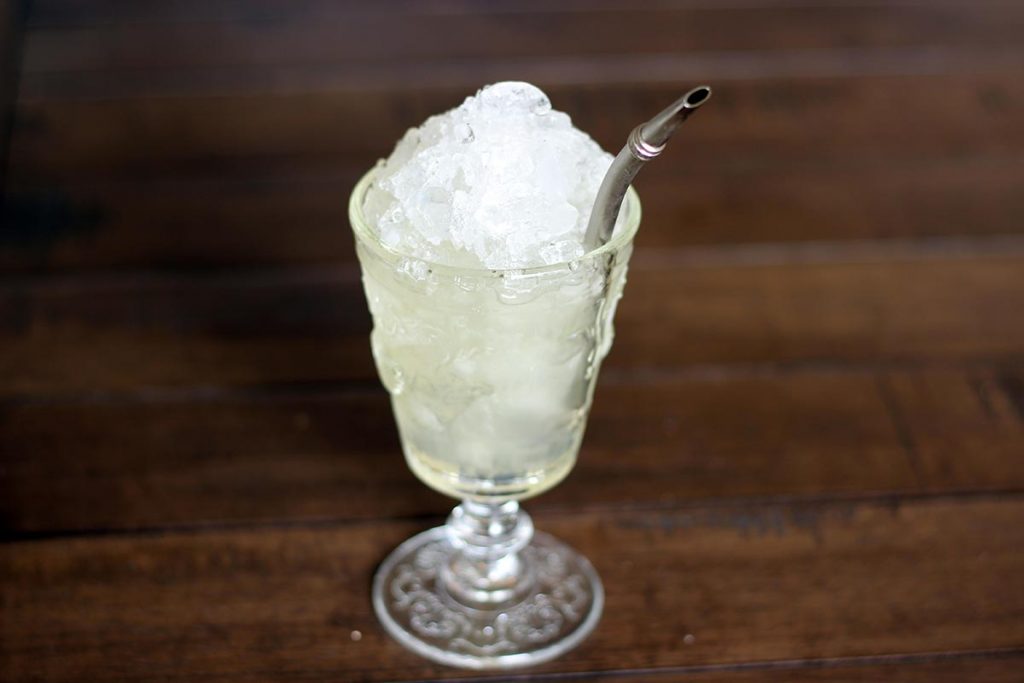
An Absinthe Frappé served with a metal straw
First, you’ll want to crush enough ice to fill your absinthe glass, which you can do by placing ice cubes in a canvas or linen bag (or wrapping them up in a not-too-fuzzy kitchen towel) and whacking them with a wooden mallet. Fill the absinthe glass with crushed ice and set it aside.
Then, add your absinthe and simple syrup—as well as an ounce or two of still water, if you’re using it—to a cocktail shaker with ice and shake until it’s nicely chilled. If you’re using soda water, save it for the next step. Strain the absinthe mixture into your absinthe glass over the crushed ice.
Finally, if you’re using soda water instead of still, use it to top off your drink. Then, pack a bit more crushed ice on top to give it a nice, convex profile, and serve with the fanciest straw you can get your hands on (we like to use a bombilla, the type of metal straw used for drinking yerba mate).
All that’s left is to sit back, take a sip, wallow in the futility of existence, and get to work writing a novel about it. But hey, at least you’ll be in good company.
Get the Absinthe Frappé Recipe
All Photos: Will Shenton, Bevvy
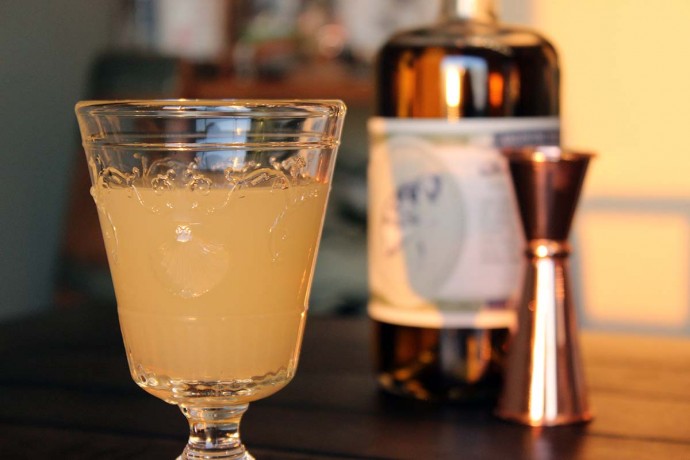
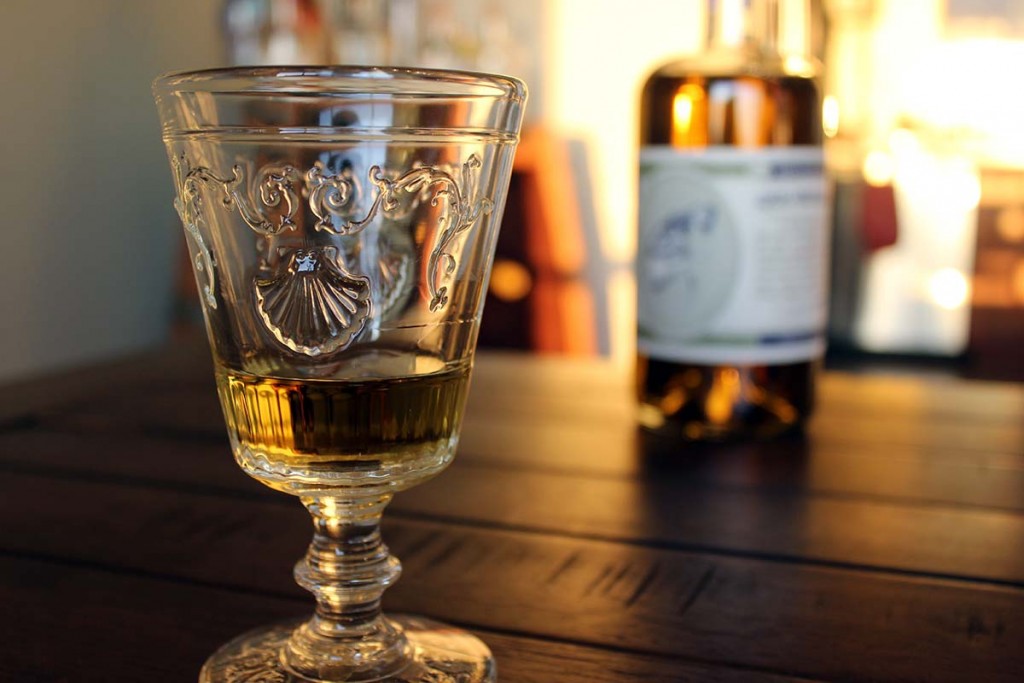
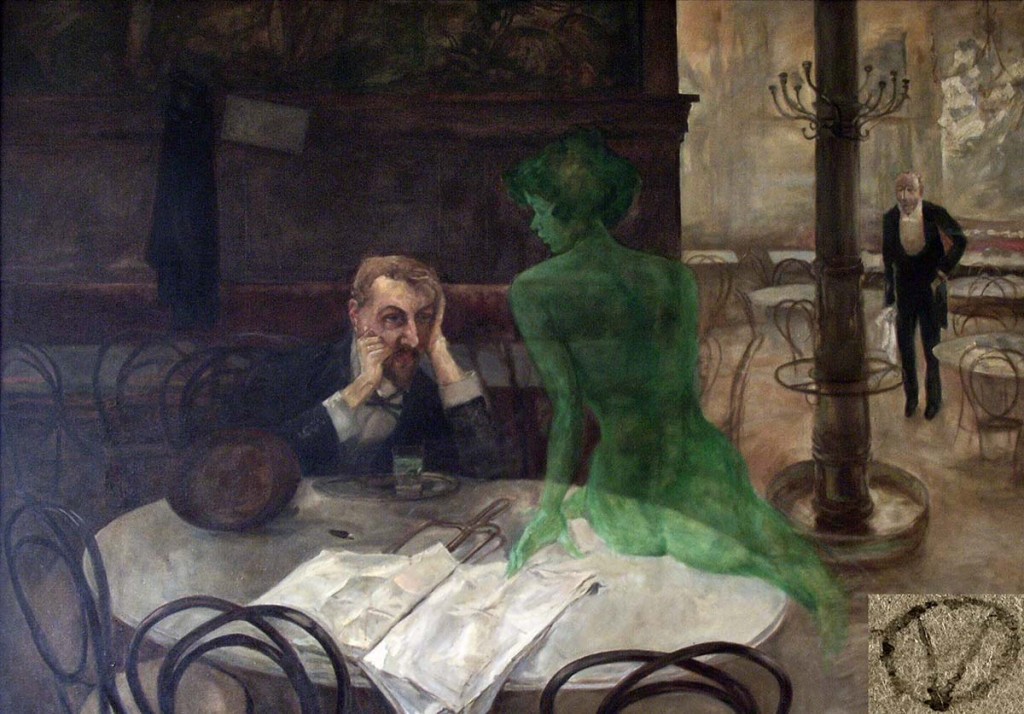

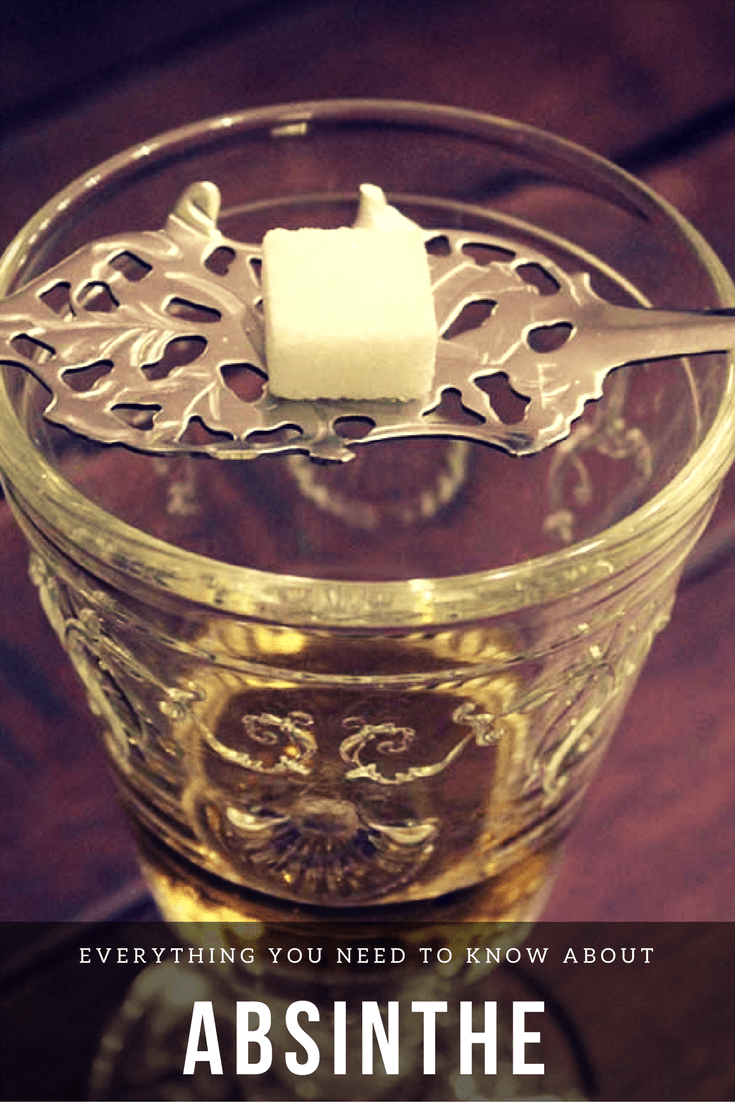

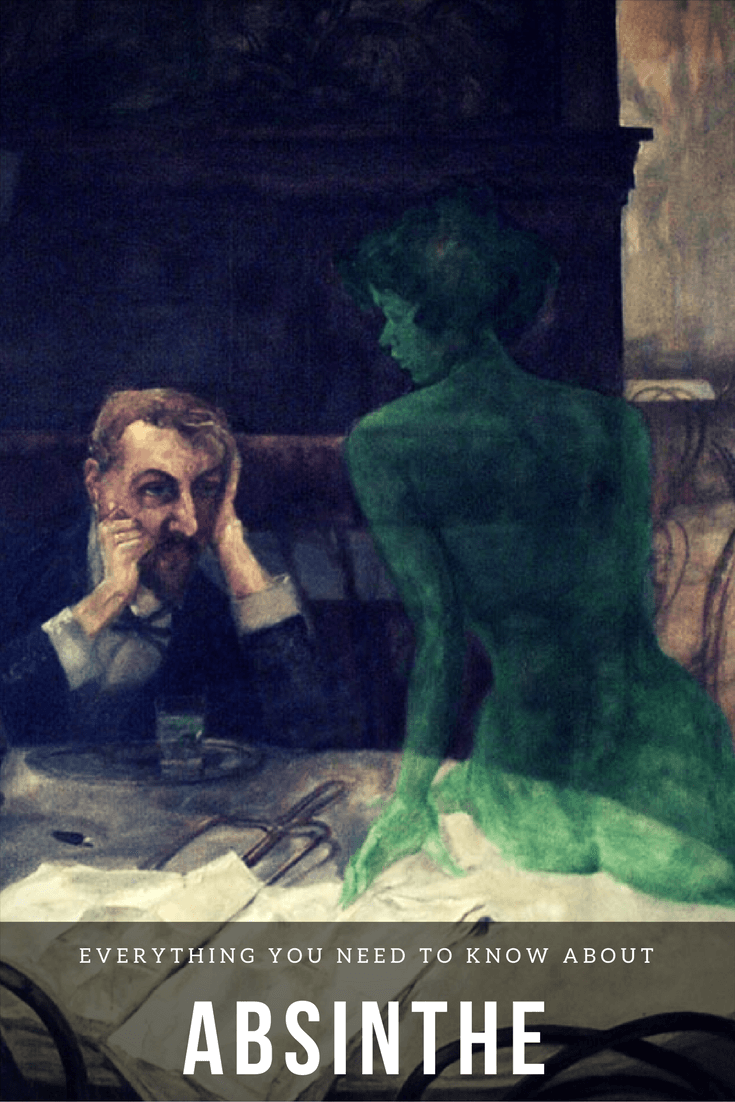



In longer discussions I usually skip, but thanks for the detailed explanation on how small fixes can make a big difference over time. this guide encourages houseowners to be proactive. i paired it with some straightforward do-it-yourself home tips that helped me address issues quickly and keep my home in better shape. i believe adding such suggestions to everyday routines can make upkeep far less stressful and much more rewarding. what i enjoy most is the encouragement to stay proactive, because prevention is always easier than dealing with bigger issues later. This time I stayed and thought it adds value to the overall topic.